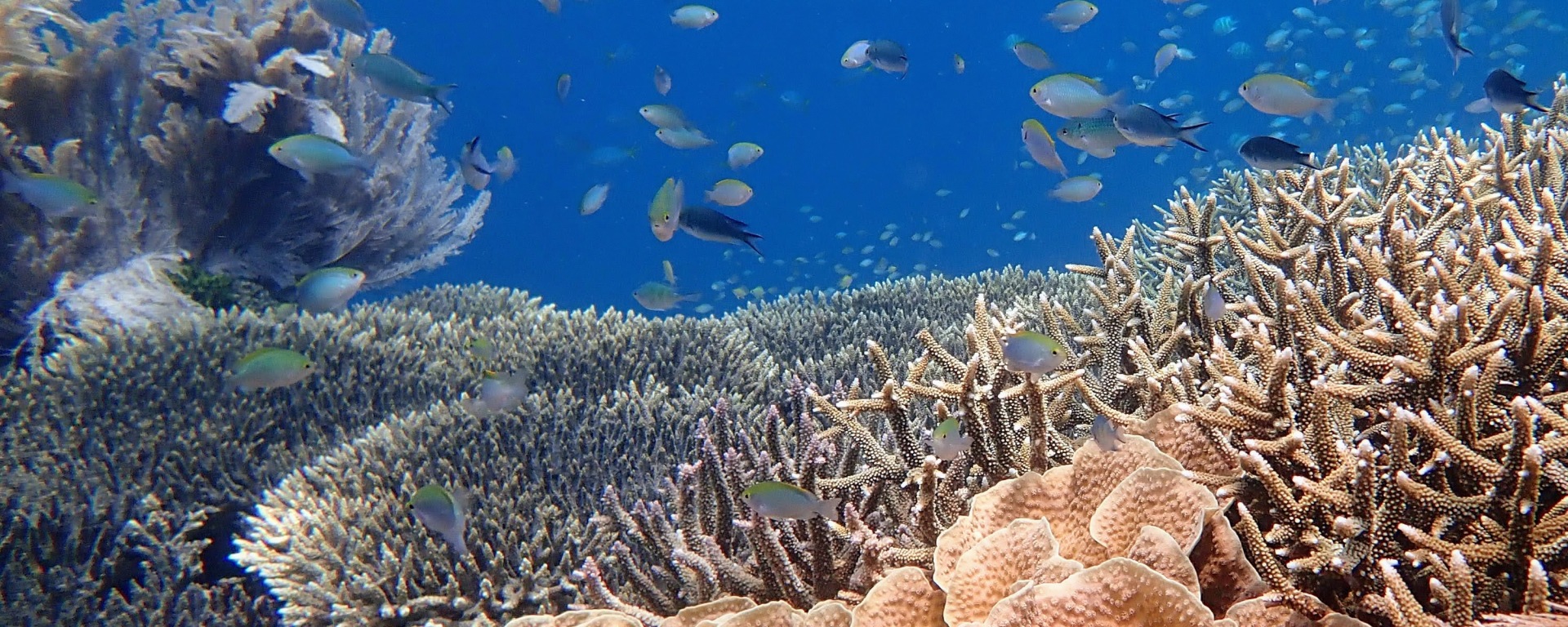Conservationists are launching bold programmes to actively restore coral reefs around the world, but efforts are hampered by a lack of effective monitoring. In their latest research, Lamont and colleagues explore the use of passive acoustic monitoring for measuring the success of coral reef restoration. Co-author Ben Williams swims us through the study…
Over 50% of the world’s tropical reef habitat has been lost since 1950, a figure which looks set to rise further in coming decades. There is therefore an increasing interest in actively restoring reef habitats, and a growing number of projects are taking on this challenge around the world.
However, recent reports found that most restoration projects fall short when it comes to measuring their own progress and outcomes. Reef restoration is a tricky business so this data can be a huge help when trying to figure out what’s working and why.
Generally, such projects focus solely on measures specific to coral growth, which overlooks the broader ecological community. This wider community is filled with fish and invertebrates that are essential in a fully functioning healthy reef, but collecting community-level data requires extensive time and expertise – time and energy that could be spent on restoration.


Monitoring recovery with acoustics
We wanted to test an emerging technology that can be used to monitor reef restoration: passive acoustic monitoring (PAM).This involves taking recordings of the ‘soundscape’; the full suite of sounds present on a habitat, which can be rich and diverse on tropical reefs. On a thriving reef you can hear popping, grunting and whooping sounds produced by fish, as well as the ubiquitous crackling of snapping shrimp. But, on degraded reefs many of these features are missing in the soundscape.
Typically, visual surveys are used to monitor reef habitats. However, these often require high levels of expertise and time in the water. Hydrophones can be rapidly deployed and left to capture acoustic recordings for extended periods of time compared to traditional survey techniques. Acoustic monitoring therefore has the potential to become a valuable method in the toolbox of restoration practitioners when designing their monitoring regime.
Our investigation
To test this out, we went to South Sulawesi, Indonesia, where one of the world’s largest reef restoration projects has been established: the Mars Assisted Reef Restoration System.
Historical dynamite fishing and coral mining has reduced large areas of reef to barren rubble fields. However, these threats are now managed more effectively, and since 2010 over 40,000m2 and counting of previously-damaged habitat has been restored.
Using an active restoration approach, loose corals are taken from nearby reefs and attached to hexagonal ‘Reef Star’ structures, which are used to carpet rubble fields. This has the dual effect of stabilising rubble and kickstarting rapid coral regrowth, which can recover from less than 5% to more than 50% live coral cover in as little as two years.

To assess the soundscape we collected and listened to repeated recordings on degraded, healthy and restored reef sites. We first compared the diversity of fish sounds (“phonic richness”) between the healthy and degraded sites and, as expected, found a significantly higher diversity on the healthy sites.
We next listened to recordings from the restored sites and were excited to find that those where Reef Stars had been deployed two or more years previously had the same level of fish phonic richness as the healthy sites. We also tested some computational measures that we could calculate from the recordings and found that one of these revealed differences between the healthy and degraded site and, once again showed the restored sites sounded much more similar to the historically healthy sites.
Turn your volume up or grab your best headphones and check out some the many sounds to be heard on the reefs around the world
- The ever present crackling of snapping shrimp dominates the soundscape on coral reefs around the world:
- Coral reef fish produce a diverse array of sounds, from simple purrs of Sergeant Majors to the charismatic whooping of the Ambon Damselfish:
- Sometimes fish can be heard ‘chorusing’ across the reef, which we recorded in Sulawesi from an unknown species of fish that produces a distinct foghorn like sound:
Looking to the future
Our findings show us that there is information within the soundscape of a reef that can be used to track the progress of its recovery. This offers a low-effort tool which reef restoration practitioners can use to compare progress of restored sites to local control sites, enabling them to enhance their monitoring programmes to capture more information on the broader ecological community.
We also hope this approach will find uses in broader reef conservation and survey efforts, as well as in other marine habitats where visual surveys are even harder to conduct.
We’ve followed this work up with a deeper exploration into automated approaches, using additional acoustic metrics and machine learning to streamline this process, which we plan to share soon. Using continued advancements to these methods, we hope to explore the soundscapes of reefs across the globe, and better understand the progress of reef restoration over time.
Read the full Open Access paper The sound of recovery: Coral reef restoration success is detectable in the soundscape in Journal of Applied Ecology.

This is a cool post: I didn’t even know that fish made sounds, let alone that those sounds could be used to judge the health of underwater communities. Furthermore, the whole topic of reef restoration is intensely fascinating. I feel like the loss of coral reefs is usually framed as a one-way street in popular nature programs. In other words, coral reefs are vanishing, and once they’re gone they’re gone forever. I had no idea that it was actually possible to do something about reef degradation, other than changing the whole world’s economy and miraculously reversing climate change.
LikeLiked by 1 person